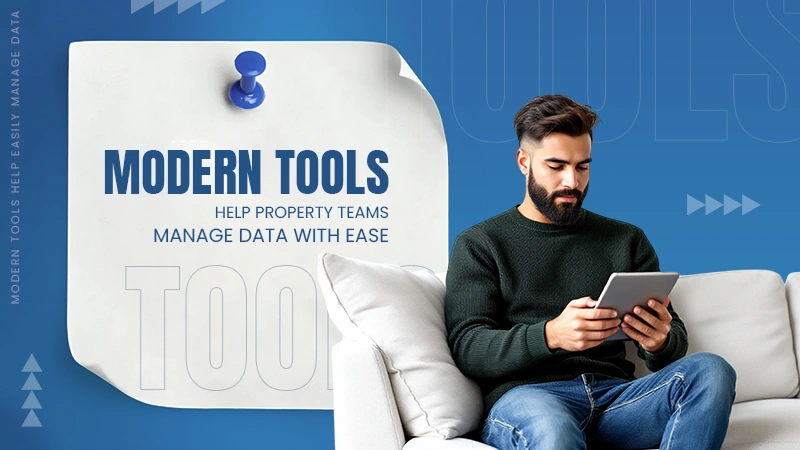SaaS tools, or Software as a Service tools, are cloud-based applications that users access over the internet via a web browser or a thin client, paying through a subscription model rather than purchasing and installing software locally.
SaaS Learning Tools: Building a Skills-First Workforce Strategy

Workforce transformation is no longer a goal for the future. It is an urgent need right now. Organizations must adapt their talent development and deployment strategies as industries change and roles evolve.
Traditional job descriptions and static career ladders are no longer effective in an environment of rapid change, hybrid models and digital disruption. A skills-first approach is a more dynamic and accurate way to align talent to business needs.
Companies can redeploy faster, identify potential more clearly, and respond more flexibly to change by focusing on demonstrated competencies rather than job titles. This model also allows people to advance along paths that reflect their true abilities.
That’s why in this blog post we are going its importance more deeply and analyze how they are going to enhance new-gen businesses.
Let’s begin!
Key Takeaways
- Taking a look at the skills-first paradigm
- Uncovering some best SaaS learning platforms
- Decoding the implementation framework
- Discovering the use of analytics for measuring success
Understanding the Skills-First Paradigm
A skills-first workforce strategy focuses on identifying, developing, and implementing individual capabilities as the primary drivers of value. This model shifts workforce planning from “Who holds this title?” to “Who has these skills?”. It challenges legacy systems by emphasizing adaptability, cross-functional growth, and quantifiable competence.
Instead of evaluating employees based on their previous roles, a skills-first model assesses their potential contributions using verified competencies. Someone with data visualization experience, regardless of their current title, might be a good fit for a product analytics team or to contribute to internal reporting initiatives. This shifts the environment to be more transparent and merit-based and supports mobility and equity.
The model also benefits employers by making workforce data more actionable. When teams can see which skills are abundant or in short supply, reskilling efforts become more targeted and cost-effective. Roles can be redefined based on real-time needs, and emerging skill gaps can be addressed before they hinder growth.
Ultimately, a skills-first strategy supports both organizational agility and individual opportunity. It demands new tools, new mindsets, and a strong learning infrastructure to succeed.
Interesting Facts
Many SaaS learning tools can integrate with other business software, such as HR platforms or eLearning authoring tools.
SaaS Learning Platforms as Skills-First Enablers
SaaS learning platforms have become essential to operationalizing a skills-first workforce model. Modern SaaS solutions provide intelligent, scalable, and personalized learning ecosystems, as opposed to traditional LMS systems, which are frequently built around compliance or static course libraries. These platforms enable real-time skills tracking, modular content delivery and integration with performance and talent systems.
Below are five core ways SaaS learning tools support a skills-first approach:
1. Skills Mapping and Gap Analysis
SaaS platforms can generate detailed skills profiles based on completed learning, assessments, and manager input. This helps HR and team leads understand where strengths lie and what areas need reinforcement.
2. Personalized Learning Pathways
Modern systems use AI to recommend learning activities tied to both individual goals and organizational needs. This ensures that all employees have access to relevant, high-impact development opportunities.
3. Microlearning and Modular Content
Short modules help learners build skills step by step without interrupting their daily work. They work well in busy environments with limited time.
4. Real-Time Progress Monitoring
Admins and managers can track progress in real time. This makes it easier to adjust resources, support learning, and connect results to business goals. For busy professionals, SaaS learning platforms’ tracking features can also be a valuable resource for university papers and internal reports. In fact, many students pursuing academic objectives rely on AI-powered tools and essay writing platforms.
For example, students working on demanding projects and seeking high-quality results often turn to professionals from Essayservice.com, who specialize in IB extended essay writing services. These platforms provide tailored support to help students meet academic standards while managing tight deadlines. Additionally, they provide valuable resources for improving writing skills and enhancing the overall learning experience.
5. Integration Across Talent Systems
SaaS learning tools often connect seamlessly with HCM platforms, performance management software and workforce planning tools. This enables centralized data, more efficient operations, and better alignment between development and business strategy.
Implementation Framework: From Strategy to Execution

Transitioning to a skills-first model supported by SaaS learning platforms requires a clear, phased implementation plan. Here’s a practical framework for getting from vision to measurable results.
Define Strategic Objectives
Begin by explaining why a skills-first approach is critical for your organization. Are you looking to improve retention, increase flexibility, or prepare for digital change? Clear goals guide platform selection and influence how learning initiatives are structured. Be specific about business needs to ensure alignment with measurable success indicators.
Audit Current Skills and Systems
Assess your existing workforce capabilities using surveys, assessments, and manager feedback. At the same time, evaluate your current learning infrastructure. Determine whether it supports skill tracking, personalization, and integration. This baseline will inform your change strategy. Consider using tools like Visier or Workday Skills Cloud for initial mapping.
Select the Right Platform
Choose a SaaS learning platform that fits your workforce’s needs and technology landscape. Prioritize solutions with modular content, analytics, user personalization and integration with your existing HR systems. Top platforms like Degreed, Docebo, Cornerstone and EdCast have features to support skills-first development at scale. Verify integration capabilities with your HRIS and performance tools.
Engage Stakeholders Across Departments
Involve human resources, information technology, learning and development, and business leaders early. Demonstrate how a skills-first strategy promotes both operational efficiency and employee growth. Clear communication is essential at this stage. Use internal workshops or platform demos to build shared understanding and commitment.
Design Skill-Based Learning Journeys
Structure learning programs around critical competencies rather than job roles. For example, instead of training “marketing associates,” create learning paths for skills such as data interpretation, content strategy, and marketing automation. SaaS tools like LearnAmp or Fuse can help personalize content by skill clusters.
Establish Tracking and Feedback Loops
Use dashboards to track progress and see where learners are doing well or not. Get feedback from both learners and managers to fine-tune. For this purpose, tools such as Totara and TalentLMS provide customizable dashboards and survey functions.
Align Learning with Workforce Planning
Connect learning outcomes with workforce deployment. Use skills data to guide internal mobility, staffing decisions, and succession planning. This step puts learning into practice. Connect data outputs to platforms like Eightfold or Gloat to facilitate real-time redeployment and workforce modeling.
Evaluate and Iterate
Finally, set periodic checkpoints to assess progress toward your original goals. Make adjustments to content, workflows, and tools as needed. Flexibility and feedback are essential for long-term success. Use quarterly reviews with learning data to revise goals and update platform features.
Measuring Success: Analytics and ROI
To track the impact of a skills-first workforce strategy supported by SaaS learning platforms, clear, measurable indicators are required. Without defined metrics, organizations risk underutilizing learning technology or misaligning it with overall workforce goals.
One of the primary performance indicators is the acquisition of skills over time. SaaS platforms with built-in analytics allow HR teams to track individual competencies across departments and roles. This can then be compared against project performance, internal mobility and promotion rates to see if learning is translating into business outcomes.
Another metric is learning engagement, which includes course completion rates, time on platform and participation in optional modules. High engagement is typically linked to personalization, relevant content and ease of access. These factors are critical for scaling a skills-first model.
Cost efficiency can also be assessed by comparing the cost of internal reskilling to the expense of external hiring. When learning pathways close skill gaps internally, talent acquisition costs decrease while retention improves.
Finally, link learning data with performance evaluations or team outcomes to demonstrate return on investment. The best SaaS systems allow for this through dashboards, reports and real-time analytics. These tools help decision makers evaluate both short-term and long-term impact.
Overcoming Implementation Challenges
Shifting to a skills-first model is not just a technology upgrade. It also necessitates cultural change, process alignment, and executive approval. While SaaS learning platforms provide the technical foundation, implementation may encounter a number of challenges that must be anticipated and managed.
One common challenge is resistance to change. Employees and managers accustomed to role-based development may question the value of skill-based frameworks. Overcoming this requires consistent communication, clear examples of how the new model benefits both individuals and teams and visible support from leadership.
Another obstacle is fragmented data systems. If your current HR technology stack consists of multiple disconnected tools, integrating a SaaS learning platform may necessitate infrastructure upgrades. Select platforms with strong interoperability and API-based connections to ensure a smooth implementation.
Some organizations also struggle with content overload. Without guidance, learners may feel overwhelmed by choices. This can be addressed by curating learning journeys tied to business goals and supported by AI recommendations and manager involvement.
Finally, scalability must be considered early. Pilots may succeed in small groups but fail to reach full potential across the enterprise. Plan for iterative rollouts with feedback loops to refine structure and messaging as adoption expands.
By addressing these challenges directly, organizations increase the likelihood of long-term success and platform adoption.
Conclusion and Next Steps
A skills-first workforce strategy combines employee development with business needs in ways that traditional models cannot. SaaS learning platforms offer the scalability, flexibility, and intelligence required to support this shift. When done correctly, they lay the groundwork for a more agile, inclusive, and forward-thinking organization.
Don’t try to change everything at once; start with a clear objective and one tangible action. Choose a skills priority, launch a learning journey and use the data to iterate. Engage stakeholders early, link learning to workforce planning and focus on long-term outcomes.
Success comes from combining good strategy, the right technology and feedback. With each step, you get closer to a workforce that learns continuously, adapts fast and competes.
Frequently Asked Questions
What are SaaS tools?
What are the statistics of SaaS?
The SaaS market is experiencing rapid growth, with the global market projected to reach over $1.2 trillion by 2032.
What are the 5 principles of experiential learning?
The 5 principles of experimental learning are engagement, reflection, application, collaboration, and ownership.
You don’t know how much you rely on your laptop until it acts up. The cursor stops moving. The fan…
Imagine this: You are juggling ten things—one tab for work, one for shopping, and one for that article you wanted…
The majority of engineering teams work at a much slower pace than they could because of systematic friction in their…
The dramatic evolution of eCommerce in the last decade has reshaped consumer expectations regarding speed, convenience, and sustainability. As a…
Payroll mistakes can lead to fines, delayed payments, and payroll disputes. These payroll issues can create pressure for high-risk businesses…
Property management teams can benefit from data in a number of ways. Everyone understands that it’s critical to make wise…
Fantastic things don’t just happen. They occur when teams transform hazy inputs into clear and actionable decisions for everyone, replacing…
There are lots of tasks that are generally very amusing and thrilling; however, bookkeeping is definitely not one of them.…
In the fleetly evolving geography of digital education, using slice- edge software development services are essential for creating poignant literacy…




